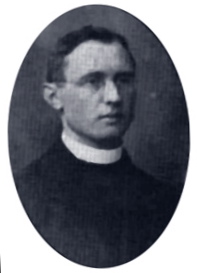Martin Gusinde Anthropological Museum
| Museo Antropológico Martín Gusinde | |

Martin Gusinde, German priest and ethnologist
|
|
| Established | 1975 |
|---|---|
| Location | Aragay / Gusinde, Puerto Williams |
| Coordinates | 54°56′06″S 67°36′36″W / 54.935°S 67.61°WCoordinates: 54°56′06″S 67°36′36″W / 54.935°S 67.61°W |
| Type | Archaeology museum |
| Collection size | almost 4,000 pieces |
| Visitors | 4,905 |
| Director | Alberto Serrano Fillol |
| Website | Martin Gusinde Anthropological Museum |
The Martin Gusinde Anthropological Museum is an anthropology museum in Puerto Williams, Isla Navarino, in southernmost Chile. It is the southernmost museum of the world. The museum hosts artifacts, maps and photographs related to the 10,000-year history of the Yahgan people, as well as European settlers since the 19th century. Samples of local flora and fauna are also displayed, as well as photographs and text from the founding of Puerto Williams.
Before the museum was founded, archaeological materials from the island’s coastal areas as well as objects of historical interest were collected and exhibited in then-Mixed School N°3 of Puerto Williams.
The museum was proposed and built by the Chilean Navy in 1974,which had a base in the area. It was named after Martin Gusinde, an Austrian anthropologist who worked in Tierra del Fuego between 1918 and 1924. The structure is partly built of Alerce wood,
The goal of the exhibition is to "inspire the conservation of the cultural and natural heritage of the region". In two floors and three halls and 810 square metres (8,700 sq ft), the museum offers a variety of perspectives on the history and culture of the region:
The first floor shows photographs, maps, objects as a synthesis of the history of the Yahgan people, the first explorations by Europeans and Chileans (1520–1890), and the gold rush from 1890 to 1950.
Articulating the Myths, a Meeting of Perspectives: The reproduction of a traditional canoe is displayed in the center of the hall to symbolize the spirit and heart of the Museum: to serve as a vessel that enables people to travel to other shores of understanding.
The second floor presents a collection of local flora and fauna. It also displays photographs and documents related to the foundation of Puerto Williams in 1953.
The museum is involved in local or neighbourhood work across a range of services, including information and advice, counseling, advocacy and support: delivering a Wi-Fi zone, skill enhancement for teachers, art expositions, films exhibition, etc.
...
Wikipedia
